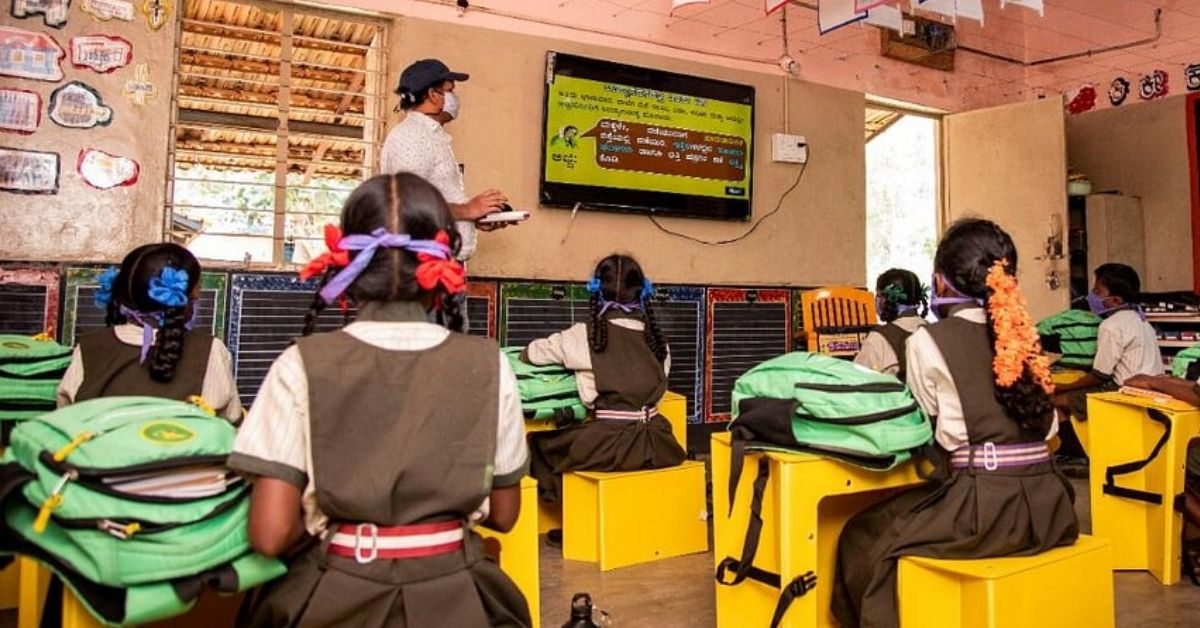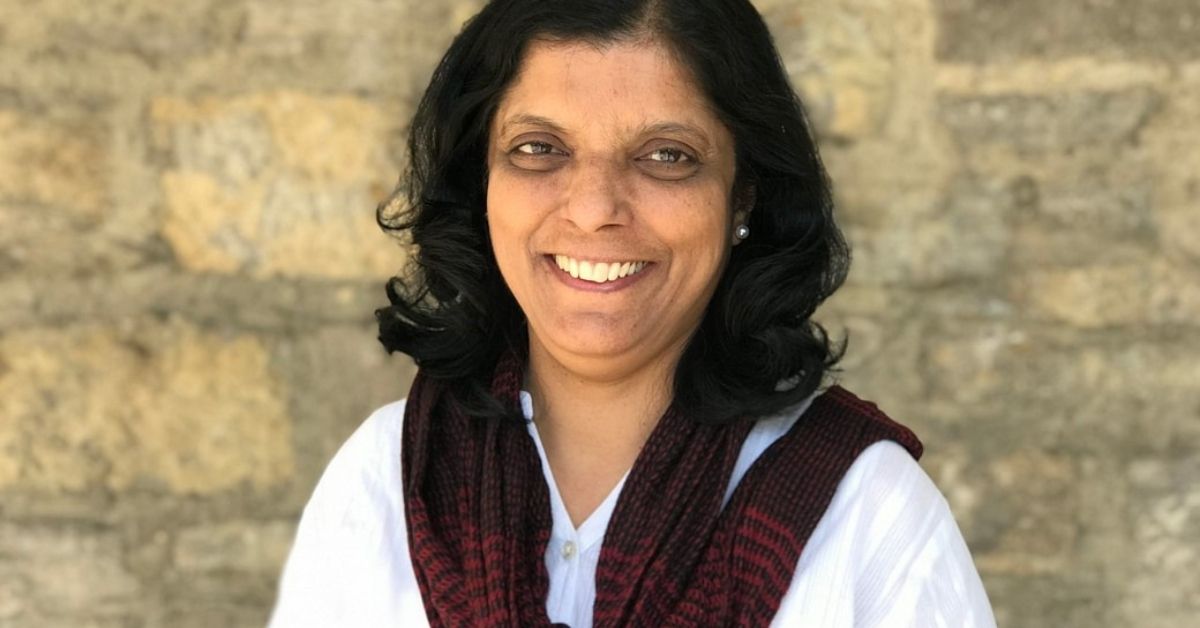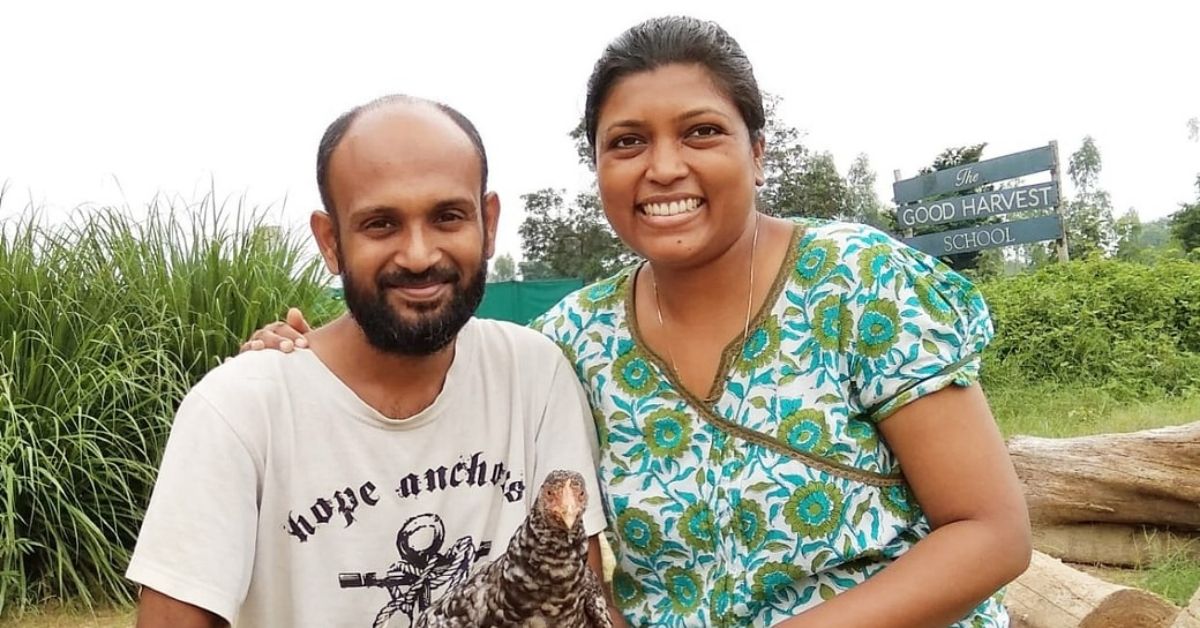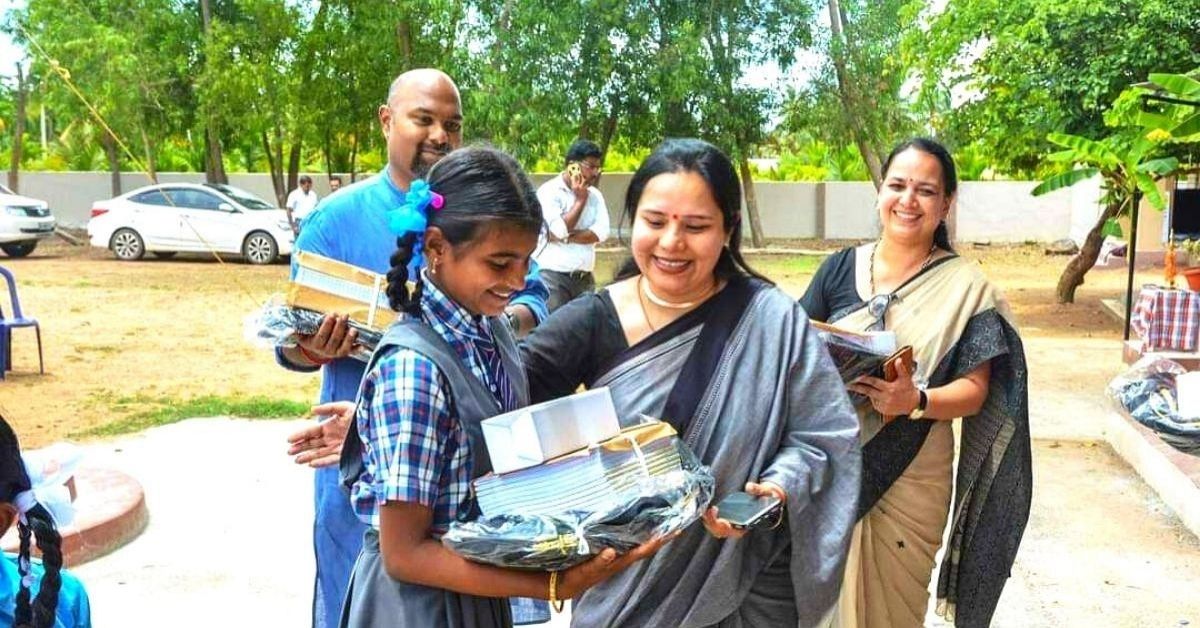These Changemakers’ Unique Approach is Bringing Girls Back to Schools Post-Lockdowns
From increased financial limitations to an amplified digital divide, the pandemic has drastically affected girl child education in India. But these individuals have a solution.

This article has been published in partnership with Childrens’ Investment Fund Foundation (CIFF) as part of #PromptHerNow, a campaign through which The Better India, Population Foundation of India and CIFF bring to light the work of various organisations and individuals who are working to help bring girls back to schools.
Two years ago, Savita (name changed) joined the classes conducted by a Bengaluru-based NGO, Dream School Foundation. At the time, she was a 14-year-old girl brimming with potential and aspirations. One of the brightest in her class, she wanted to grow up to be independent, just like Maitreyee Kumar — the founder of DSF, who has been supporting and mentoring many girls like Savita.
Deep within her heart, she cradled big dreams and a promise of a better future. But today, her dreams are far from reality.
Now, Savita is a 16-year-old mother to a newborn.
The pandemic shattered her dreams, like it did for countless young girls in India who battle with society and sometimes their families to exercise their basic right to education.
Born at the turn of this century, Savita was a part of a new wave of change in the education sector of the country. As pointed out in the Annual Status of Education Report (ASER) launched in 2019, Savita and many girls like her were responsible for crashing the dropout rate of girl students from 10.3 per cent in 2006 to 4.1 per cent in 2018. She was a part of a positive trend simmering even in the interior parts of India with a promise to bridge the gender gap in education.
However, this celebration was short-lived.
As schools shut down due to the COVID-19 pandemic, the gender gap in education once again began to increase. Although most educationists decided to migrate online to mend the gap, a glaring gender-based digital divide also surfaced. Several studies, like the one by Young Lives, show how girls in rural areas and urban slums are not afforded the same privileges as boys, with access to smartphones or laptops for online learning.
From increased financial limitations to an amplified digital divide, the pandemic has drastically affected girl child education in India. Some studies estimate that close to 10 million girls may never return to schools following the pandemic. And, Savita might be one of them.
“We lost many students, especially girls during the pandemic due to these issues. In Savita’s case, back in 2019, we had intervened when her family had decided to marry her off to a relative. We convinced her family that giving her an opportunity of education was the best choice and they agreed. But, after the lockdown, when the family’s income came to a halt, they decided to secretly marry her to the same relative. By the time we got to know about Savita, it was too late. A 16-year-old child was mothering her own child by then. Unfortunately, in several parts of India, young girls are still perceived as ‘burdens’,” says Maitreyee, who has had to experience many of these moments of failures while running DSF for the last 17 years. However, this never deterred her from her path.
DSF, aims to provide quality education to the children of migrant and daily wage labourers studying in government schools, all of whom are first-generation school goers.

Maitreyee takes every failure as an opportunity to do better and help more people. So now with classes steadily resuming and a glimmer of hope for normalcy, she and many individuals like her have begun to pick up the pieces, starting from scratch and working towards building a bigger and better future for India’s youth, especially young girls.
Crossing The Digital Divide
With the first wave of COVID-19, the education sector suffered a huge shakedown. Reeling in uncertainty, many educational institutions took time to migrate online and offer a semblance of normalcy. Organisations that worked with children from underprivileged backgrounds had another hurdle to cross — A digital divide that continues to plague both urban and rural parts of the country.
In collaboration with corporates, DSF managed to introduce a solution by providing gadgets like smartphones, tablets and laptops to the students to continue classes online. “It took us some time to acclimatise to the situation and make up for lost time. By June 2020, we had distributed smart devices to the kids to continue classes online and since then we have had good progress. The online classes ensured that the students were up to speed with their coursework and we have fortunately had almost a 95 per cent retention rate due to this,” Maitreyee shares.

However, that hasn’t been the case for the UP-based techie couple, Ashita and Anish Nath who run the first-of-its-kind agriculture school for girls called the Good Harvest School in Paschim Gaon, Unnao district.
Speaking about a myriad of challenges in the path of furthering girl child education, Anish says, “It is not just the digital divide that fuels the gender gap in education. It is deeper than that. Not only do girls have lesser access to technology as compared to their male peers, they are also pressured to prioritise housework over studies — something that stuck out like a thorn during the lockdown. The school provides a physical safe space that allows them to learn freely but the home environment is not always conducive for learning. Because of this we have had drop-outs, and those that came back had forgotten most of their lessons. We were back to square one convincing parents to send their girls to school. We had to literally start from scratch.”
A Middle Path
Who is to blame for this situation? Is it the parents, the education sector or society? Anish says the answer is not simplistic.
“When one is struggling to survive and manage basic necessities like food and medicines, education becomes secondary. Families in this region have been financially drained to the brink of poverty. In such a situation, we need to come up with solutions that do not isolate the parents but help them survive without compromising on their daughters’ education,” he says.
Be it through technological intervention, financial support or tangible incentives to parents, there needs to be a wholesome and sustainable approach undertaken by several stakeholders to ensure immediate prevention of girl child dropouts.

For this, Anish and Ashita began to distribute smartphones to the girls free of cost. They have also begun to hold classes at the school with small batches of students. Additionally, to ensure last mile reach, they are also travelling to nearby villages to set up makeshift classrooms and conduct classes near their homes.
Calling this approach ‘a middle path’, co-founder of Bal Utsav, a Karnataka-based social impact organisation, Ramesh Balasundaram shares how providing smartphones to students is only a small part of the solution. “A lot of parents, especially from lower income backgrounds, are yet to make peace with the idea of online education. To them, looking at the phone all day is not learning but a distraction.”
He adds, “This becomes worse when the student is a girl. Hence, the solution to this requires online content with offline worksheets to help students continue their studies despite the lockdown.”
It is due to this approach that Bal Utsav has managed to survive the shutdown of schools without losing connection with almost 8 lakh students.
With such diverse efforts, these individuals continue to strive towards a single goal — to help girl children get the same opportunities as their male counterparts and be instrumental in building a society with equal opportunities for all. It is time we empower our daughters by encouraging them to go back to school and set in motion a positive cycle of change in society.
This story made me
-
97
-
121
-
89
-
167
Tell Us More
We bring stories straight from the heart of India, to inspire millions and create a wave of impact. Our positive movement is growing bigger everyday, and we would love for you to join it.
Please contribute whatever you can, every little penny helps our team in bringing you more stories that support dreams and spread hope.



















